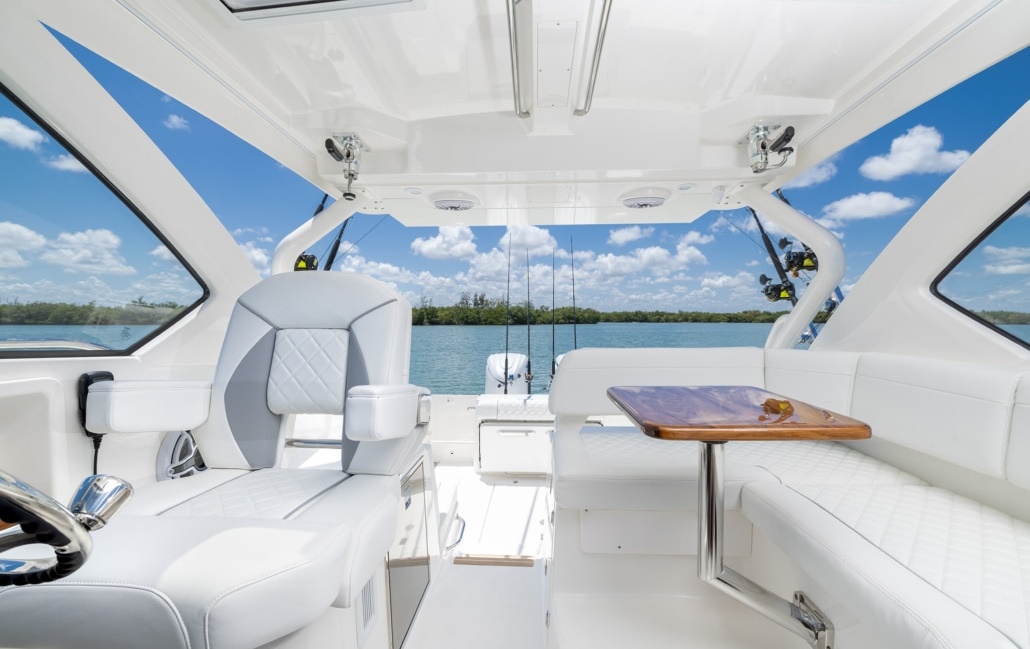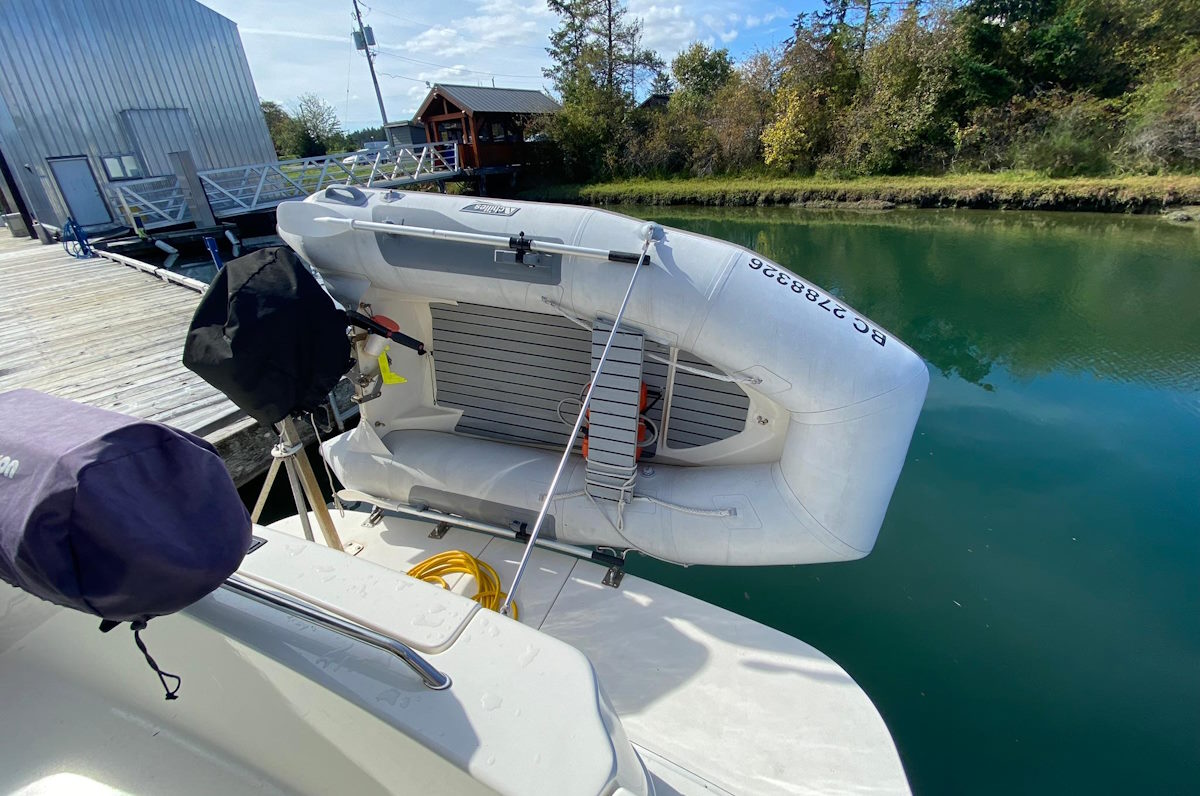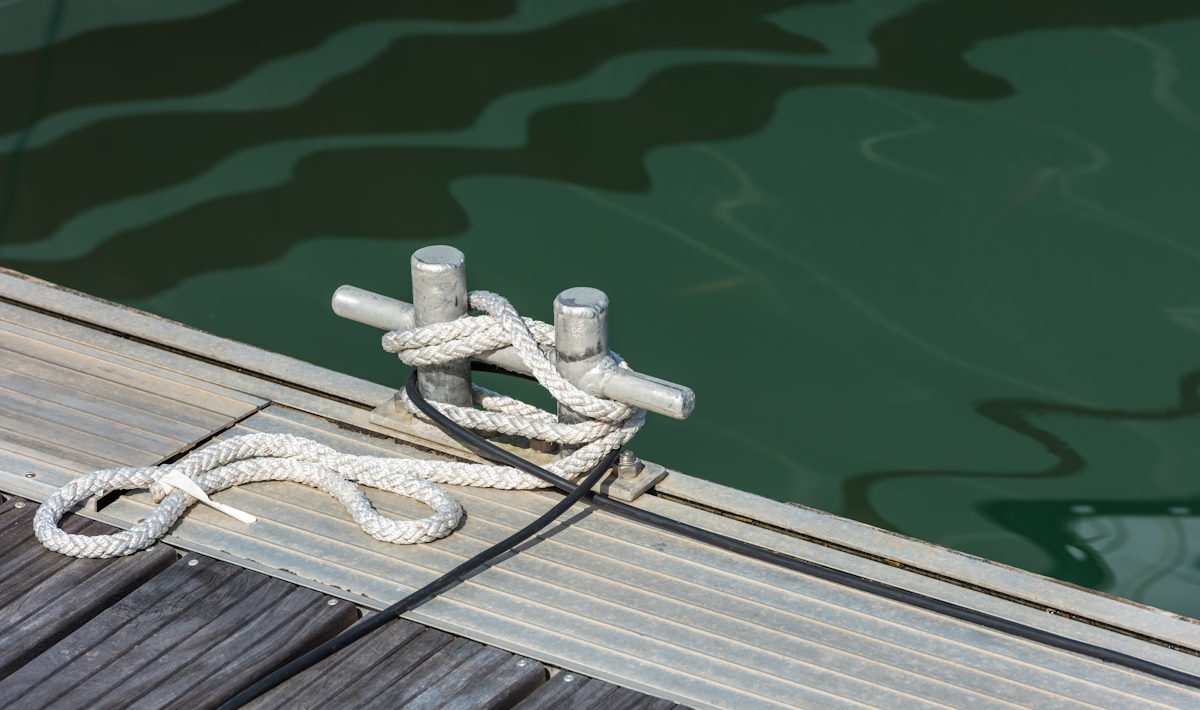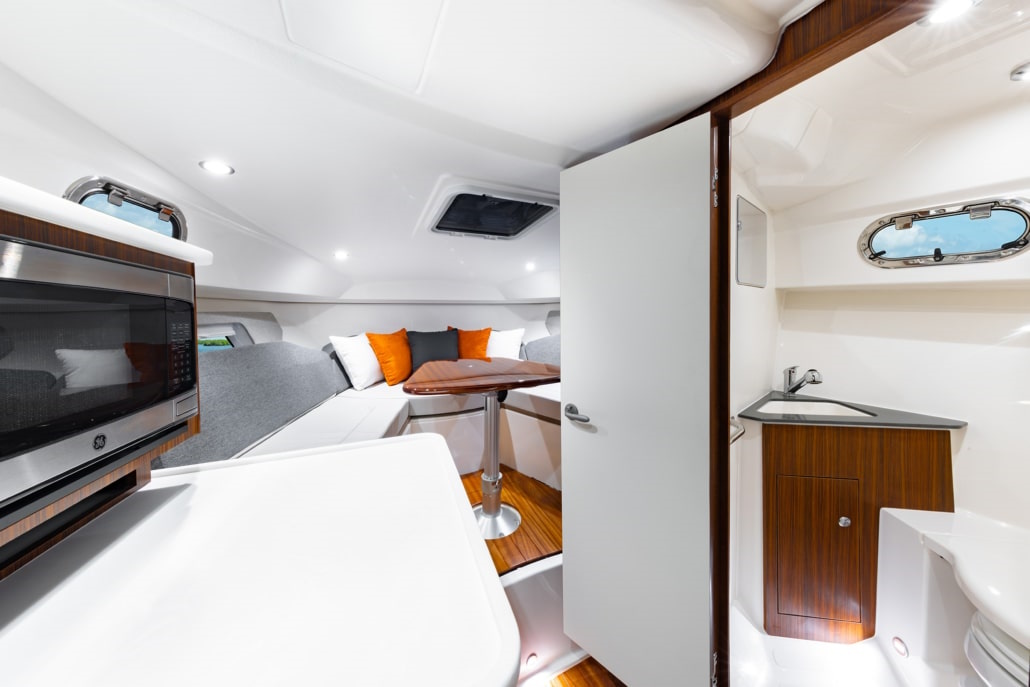The Anatomy of a Boat: An Overview of Boat Parts
If you’ve recently become a member of the boating community, you’re probably interested in familiarizing yourself with the general anatomy of a boat. Even some long-time boat owners could use a brushing up of their terminology and knowledge. In the boating world, there’s no such thing as being too prepared.
In this article, we’re covering all the general language you need to make sense of when owning and operating a boat, plus a general breakdown of each component of a boat. Not all boats are the same, but this article should help you get your bearings around most boats.
General Anatomy of a Boat

Learning the fundamentals of boating, including key terminology and boat anatomy, is part of the boating license process here in Canada because it’s important to be able to quickly communicate to other people on board or when calling for help. Here’s a general overview:
- Bow: This is the front part of the boat that points forwards when in motion.
- Stern: This is the rear part of the boat. On many boats, the stern is also where you’ll find the engines, plus some storage, seating, and a swim platform.
- Port: This is the left side of the boat.
- Starboard: This is the right side of the boat, most typically the captain’s side.
- Helm: The helm is the general area where the captain controls the boat from, which includes engine controls, joysticks or wheels.
- Hull: The hull is the body of the body that provides floatation on the water. Some hulls glide on top of the water, while others are designed to propel through water. The topside of the hull is out of water while the underside is touching water.
- Gunwale: The gunwale is the edge of the boat, where the hull meets the deck on both sides.
- Keel: Running from the bow all the way to stern, this is the beam that leads the boat through water.
- Propellor: Located on the bottom of the boat, these are the familiar metal blades built like a fan that move the boat through the water.
- Deck: This is everything above the hull that can be walked around on and accessed by passengers. In larger boats, there will be multiple decks on board.
- Cabin: These are the living quarters that people sleep in and spend time indoors.
- Bridge: This is where the captain’s controls and boat electronics are found (as well as the captain).
- Galley: This is the kitchen on board. While typically below deck in the cabin, some boats will have a galley on deck.
- Head: This is the bathroom on a boat, almost always found below deck.
Key Distances & Measurements
When looking at the boat head on, with the bow facing you directly, there are some key distances and measurements to be aware of:
- Beam: This measurement refers to the width of the boat at its widest point from port to starboard.
- Draft: This is the distance from the waterline (where the boat touches the water) to the keel at the bottom of the boat.
- Freeboard: This is the distance from the waterline to the gunwales on either side of the boat.
Other Boat Parts

Here are some of the other key terms every boat owner should know. There are plenty more out there, but this glossary covers the basics:
- Anchor: The large, heavy hunk of metal that’s dropped into the water to prevent the boat from moving.
- Awning: The retractable piece of canvas or other material to shield passengers from the elements when on deck.
- Ballast: Extra weight added to the boat to stabilize it.
- Bilge: An area near the bottom of the boat, typically near the head’s shower, that collects excess water.
- Bulkhead: An upright supportive structure or wall that connects key compartments of a boat within the hull.
- Coaming: The edge of the cockpit that prevents water from spilling into the bridge.
- Console: This is a gathering area above the deck or cockpit.
- Dinghy: Also known as the tender, the dinghy is a smaller boat used to transport people and luggage to and from land.
- Flybridge: A bridge on top of the boat’s cabin on larger boats.
- Hatch: A small opening that connects the cabin area with the deck.
- Porthole: A window (typically circular).
- Rudder: A flat piece hinged vertically near the stern that’s used for steering.
- Swim platform: A platform near the stern used for jumping into the water and climbing back out.
- Thruster: Used to move larger boats sideways in either direction without having to move the boat forwards or backwards.
Miscellaneous Boating Terminology

While not physically found on the boat, here are some miscellaneous terms you’ll encounter when boating:
- Line: Another name for a rope.
- Cleat: A metal device used to secure and tie lines to.
- Mooring: A safe place to store your boat, like a marina.
- Rigging: Special lines used to operate the sails, masts, and yards.
- Waterline: Where the water intersects with the hull.
Looking to get into a new boat? Van Isle Marina in Sidney has a big selection of new and pre-owned boats for sale – plus, we’re a dedicated Pursuit dealer. Meet your broker, apply for financing, and browse our selection on this page: Yachts for Sale.
Contact Van Isle Marina with questions about moorage, boat maintenance and other services.


